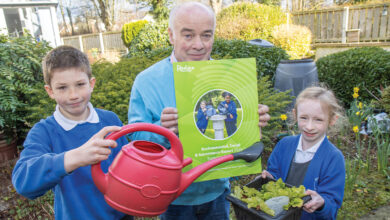Reforming social housing
 The reform programme has set out a new regulatory framework for social housing providers and gathered the views of tenants.
The reform programme has set out a new regulatory framework for social housing providers and gathered the views of tenants.
Social housing currently comprises 15.6 per cent of all homes in Northern Ireland. A new framework, forming part of the overall Social Housing Reform Programme, aims to regulate the activities and services provided by social landlords. It is currently out for consultation up to a deadline of 10 June.
The new regulation regime will aim to “protect and empower” tenants and deliver high-quality housing services. The Department for Social Development currently regulates and inspects housing associations and the framework plans to extend this role to cover the Housing Executive. It will not apply to private landlords.
This consultation examines how regulation should be implemented, but does not outline who the regulator will be or where they will be based. Regulation by the department poses questions about its independence. Proposals for structural reform will be brought forward as part of the Social Housing Reform Programme later in 2015.
Minister Storey said: “Together, the Northern Ireland Housing Executive and 24 registered housing associations manage approximately 124,000 social homes in Northern Ireland. Given the importance of those homes to tenants, and indeed the level of public funds invested in those homes, it is vital that we are assured of the ongoing financial and business health of these housing providers.”
Focusing on the tenants, the framework will examine tenant involvement, complaints, services and needs. It will also consider governance and risk management in order to support the business and make efficient use of public funds, and improve internal and external governance. A financial standard will protect assets and public funds, and improve financial planning and assumptions, and compliance with lenders covenants. The regulator will have additional powers in enforcement, penalties and compensation.
Tenants’ views were also sought in a recent consultation as part of the reform programme. Tenants expressed their views on the role they play in shaping the delivery of social housing and the services they receive from social landlords. There are strong examples of landlords providing tenant-focused services and engagement. However, there is a lack of consistency within the housing association movement. Many tenants currently have few opportunities to get involved with their social landlords and their services.
Tenant participation requires “respect and partnership” between tenants, board members and staff. It is a continuous process in which tenants can share information, ideas and influence. Information shared with tenants needs to be clear, timely and accessible. Decision-making processes should also be open, clear and accountable. Tenant representatives should be able to work out a common view before meeting landlord representatives. Landlords must recognise the independence of tenants’ organisations, which need adequate resources for organisation, training and support. Participation in rural areas must also suit the particular circumstances and needs of rural tenants e.g. dispersed housing units and longer distances for service providers.
The consultation examined how tenants can become “powerful customers” who are more actively involved at all levels across social housing. The resulting strategy will also look at what role the Department for Social Development can play in supporting tenant empowerment. Social landlords should have their local participation strategies or methods in place to meet the proposed standards by April 2016, which should be reviewed every three years.
The Minister commented that “2015 is an incredibly important year for the future of social housing in Northern Ireland.” He added that over the next few months further work will be carried out on a new social housing rent policy, how organisations should work with the 11 new councils and the future structures for delivering social housing.





